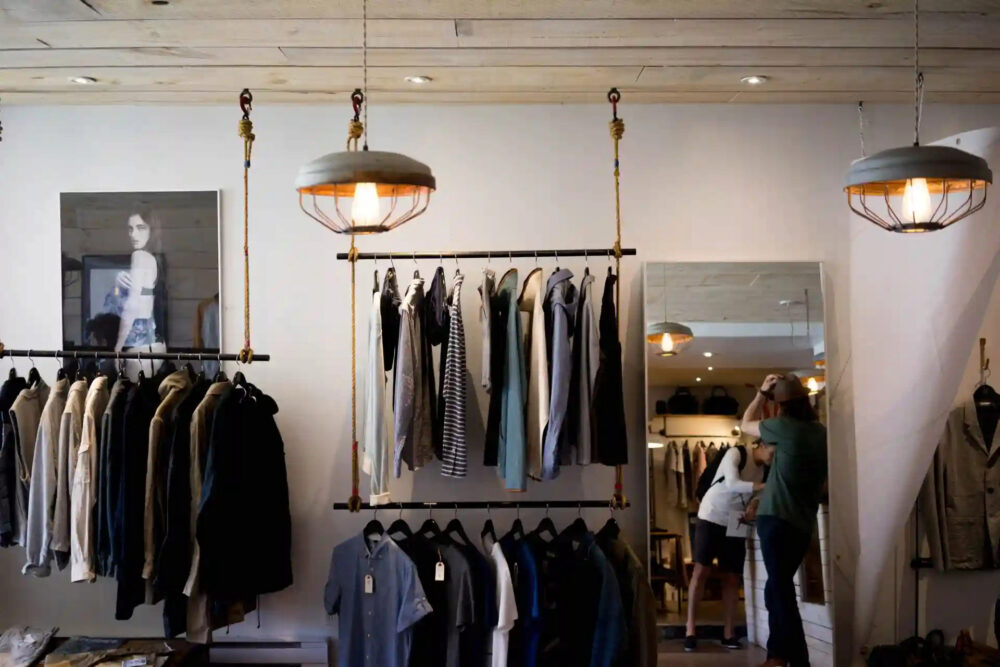Denim - a fabric synonymous with versatility, durability, and timeless style. What was once a humble workwear staple has transformed into a fashion statement that transcends age, gender, and cultural boundaries. From cowboys in the Wild West to runway models strutting their stuff, denim has undergone a remarkable evolution, cementing its place as a wardrobe essential for people worldwide. In this blog post, we will take a deep dive into the fascinating history and evolution of denim, tracing its journey from utilitarian beginnings to becoming an iconic symbol of fashion.
The Birth of Denim: A Fabric Born to Work
The story of denim begins in the French town of Nîmes, where a sturdy cotton fabric known as “serge de Nîmes” was first produced in the 17th century. This dense twill fabric was highly valued for its durability and resistance to wear, making it ideal for workwear. However, it wasn’t until the mid-19th century when a visionary tailor named Levi Strauss and a skilled Nevada-based tailor named Jacob Davis revolutionized the industry.
In 1873, Strauss and Davis patented the first pair of riveted work pants made from denim fabric. These pants, known as blue jeans, featured copper rivets on stress points, reinforcing the pockets and seams, greatly increasing their durability. Initially designed for gold miners and laborers in the American West, blue jeans quickly gained popularity for their ruggedness and practicality.
Denim Goes Mainstream: An Iconic Cultural Symbol
As the 20th century dawned, denim began to transcend its utilitarian origins and enter mainstream fashion. Hollywood played a significant role in popularizing denim, with actors like James Dean and Marlon Brando sporting jeans in rebellious roles, cementing their association with youth culture and non-conformity. The 1950s saw the rise of the iconic Levi’s 501 jeans, which became a symbol of rebellion, counterculture, and Americana.
The 1960s and 1970s witnessed the denim revolution, with the fabric being embraced by the hippie movement and countercultural youth. Denim was no longer just workwear; it was an expression of individuality and a rejection of mainstream fashion norms. Distressed and patched jeans became popular, reflecting the anti-establishment sentiment of the era.
Denim Meets High Fashion: A Match Made in Style Heaven
In the 1980s, denim made its way onto high-fashion runways, marking a pivotal moment in its evolution. Designers like Calvin Klein and Giorgio Armani elevated denim to new heights, showcasing its versatility and ability to adapt to various styles. Denim jackets, skirts, and even suits became fashion staples, blurring the line between casual wear and haute couture.
The 1990s brought about a grunge movement that embraced a more relaxed and edgy aesthetic. Baggy jeans, ripped denim, and the iconic denim-on-denim look became synonymous with the music scene and street style of the era. Pop culture icons like Kurt Cobain and Tupac Shakur contributed to the popularity of denim, solidifying its position as a fashion must-have.
Denim Today: A Fashion Staple for Every Generation
In the 21st century, denim continues to reign supreme in the world of fashion. It has become a staple in every wardrobe, with countless variations, washes, and cuts available to suit individual preferences. From skinny jeans to boyfriend jeans, denim shorts to denim shirts, the possibilities are endless.
Sustainable denim has also emerged as a growing trend, with eco-conscious brands employing innovative processes to reduce water consumption, use organic materials, and promote ethical manufacturing practices. This shift reflects a growing awareness of the environmental impact of the fashion industry and a desire to make more responsible choices.
The Future of Denim: Innovations and Beyond
As we look ahead, denim shows no signs of fading into the background. The future of denim lies in innovation, with advancements in technology and design pushing the boundaries of what is possible. From smart fabrics that adapt to temperature changes to biodegradable denim, the industry is constantly evolving to meet the demands of a changing world.
Furthermore, denim’s ability to blend with other fabrics and adapt to different styles ensures its longevity in the ever-changing landscape of fashion. Whether it’s pairing denim with luxurious silk or incorporating it into avant-garde designs, designers continue to find new ways to reinvent this timeless fabric.
Conclusion: Denim’s Enduring Legacy
From its humble beginnings as workwear to its current status as a global fashion phenomenon, denim has come a long way. Its ability to adapt, evolve, and capture the spirit of each era has made it an enduring symbol of style and individuality. As we embrace the future, denim will undoubtedly continue to shape and be shaped by the ever-evolving world of fashion, leaving an indelible mark on our wardrobes and our cultural landscape.
So, the next time you slip into your favorite pair of jeans or don your trusty denim jacket, take a moment to appreciate the rich history and evolution of this remarkable fabric. Denim is not just a piece of clothing; it’s a living testament to the power of fashion to transcend time, connect generations, and tell stories of strength, rebellion, and self-expression.
Keywords: denim evolution, workwear to fashion, denim in history, denim in fashion, sustainable denim, future of denim, denim innovation, denim trends
Thank you for joining us on this journey through the evolution of denim. We hope you enjoyed exploring the rich history and cultural significance of this iconic fabric. Share your favorite denim memories or styles in the comments below. Let’s celebrate the enduring legacy of denim together!
